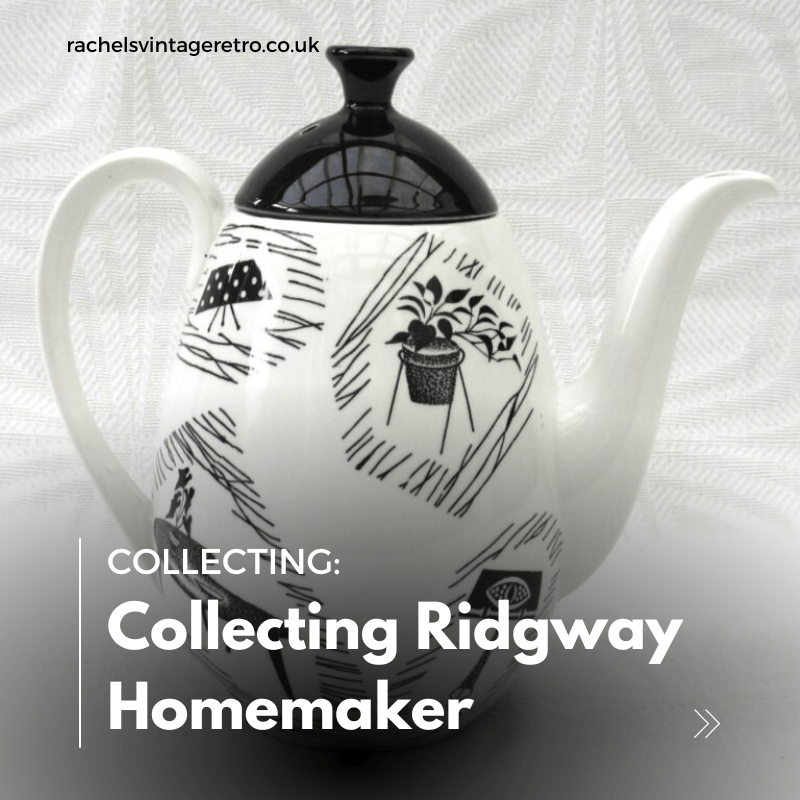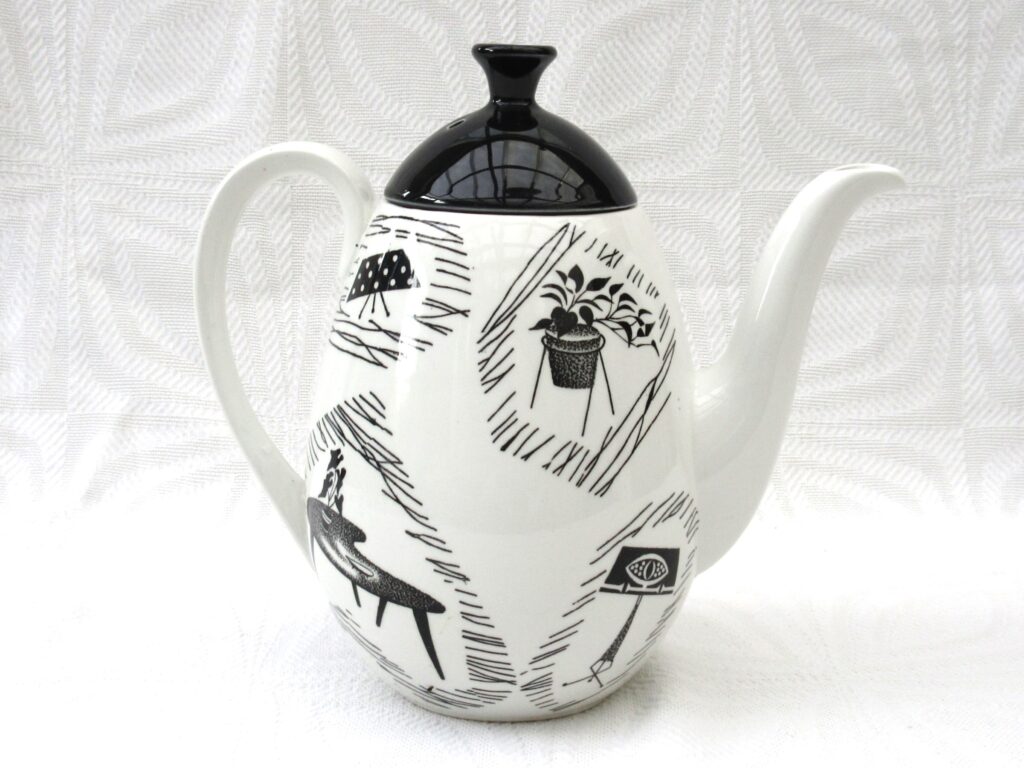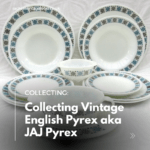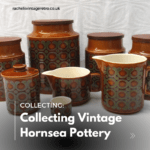The 1950s bought post war optimism to Britain and a boom in innovative designs for the home, from ceramics, to glass, to furniture, gadgets and lighting. What you had in your home began to say something about you, and this was usually aspirational, especially for young working class couples setting up home for the first time. One of these designs was Ridgway’s ‘Homemaker’ which was not only very popular in its time, but still remains so with collectors of today.
Homemaker was produced by Ridgway Potteries in Staffordshire and featured a distinctive black and white design featuring illustrations of the latest fashionable home furnishings. These included a Robin Day reclining chair, a kidney shaped coffee table, Gordon Russell style sideboard and atomic plant holders. It was mass produced earthenware pottery, designed by Enid Seeney (1931-2011) and was soon picked up by a buyer from Woolworths in 1957. The design immediately appealed to those who couldn’t afford the designer price tag of the more expensive items depicted, but allowed them to bring the idea of it home at an affordable price. Thus, a design classic was born.
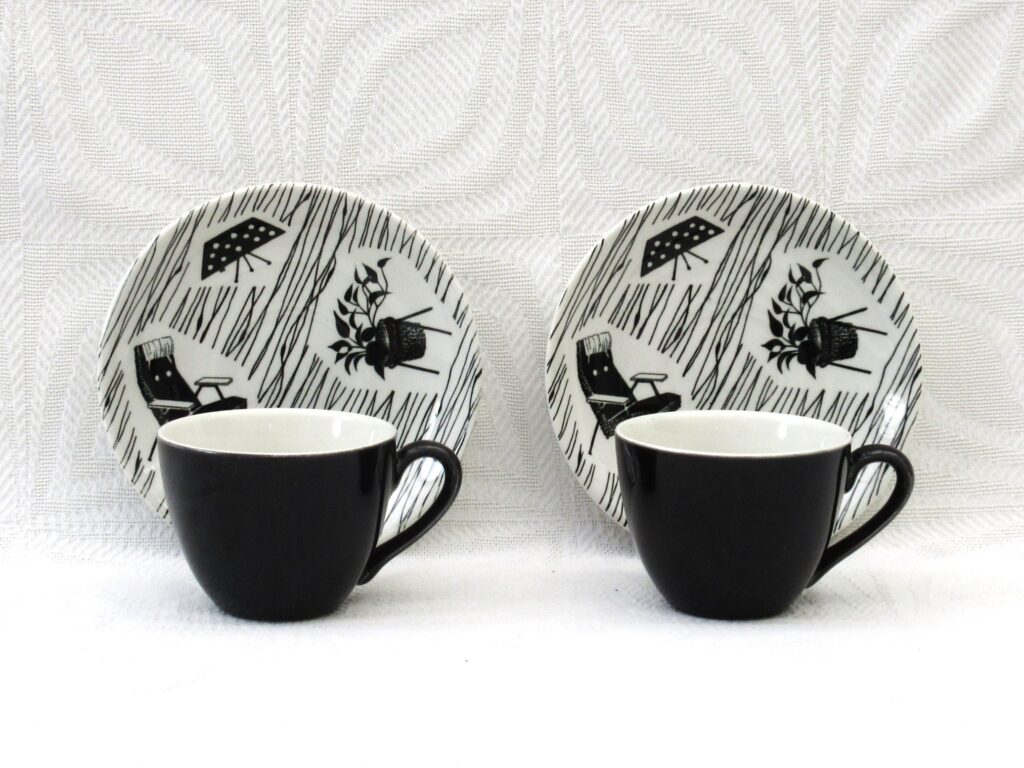
The range was produced until 1970 and consisted of new US style rimless plates, along with jugs, cups and saucers, plate stands, gravy boats, bowls, cruet sets tureens and sandwich plates. The most sought-after items today are the coffee and tea pots which can go for anything between £100 and £300. Ridgway Homemaker holloware (teapots, coffee pots and milk jugs etc) was also produced in two shapes, ‘Metro’ and later ‘Cadenza’. It is the Cadenza teapot that can demand the highest prices as this was one of the only products redesigned for that range. There was also a bon bon dish which is rare to find today, as well as designs produced in red for the Australian market and experimental colours such as green. There were a range of backstamps, and even unlicensed copies made by US company Homer-Laughlin.
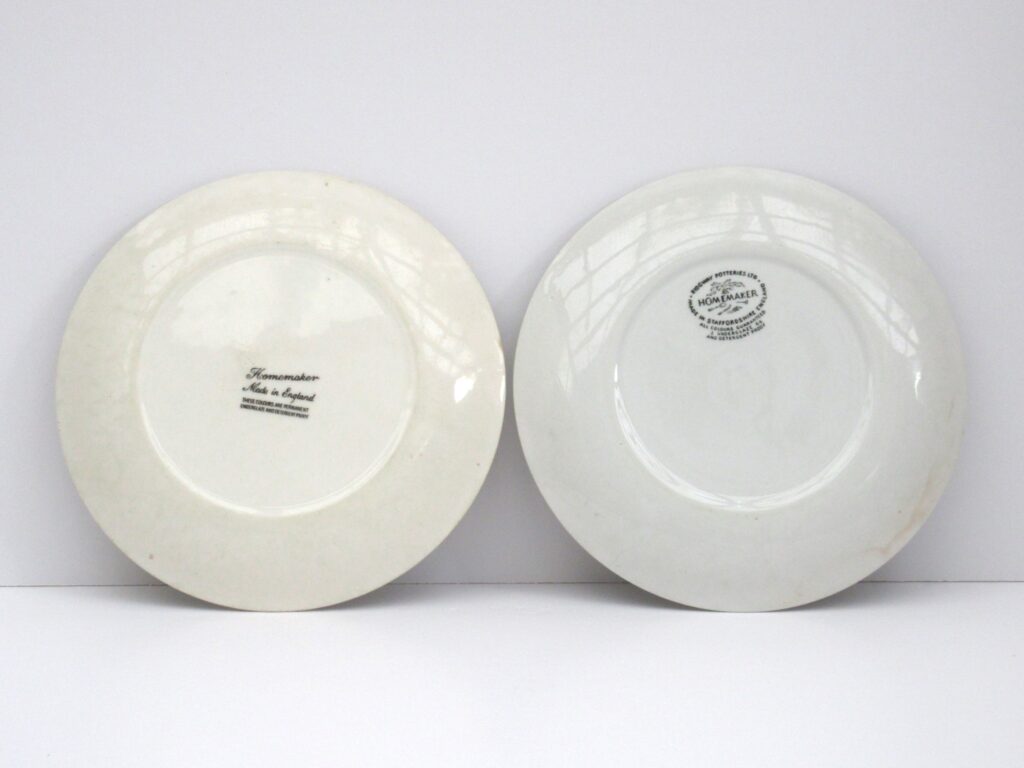
Ridgway used a new style of printing to transfer the designs to the products, called the Murray Curvex litho process. A reverse design was applied using a gelatine pad and the wet print would then mould to the shape of the item, making all over pattern possible. The only products this couldn’t be applied to where the hollow shaped teapots and jugs etc, so they instead were decorated with a cut out version of the pattern.
Enid Seeney left Ridgway in 1957 to get married and move to Devon. This was soon after her design was snapped up by Woolworths and she was unaware of how popular it had become. It was a chance encounter that alerted her to this, in seeing her design in her local Woolworths in Plymouth. Since then she followed the progress of her range and kept a record of all her Ridgway Homemaker sightings. Later in the 20th century she was also pleased to discover a new generation were beginning to appreciate it too. A book was written about Homemaker by Simon Moss (Homemaker: A 1950s Design Classic) who also met her and interviewed former employees of the factory for meticulous research. They went to the Victoria and Albert Museum together in the 1990s where she saw that one of her plates was included in the ceramics gallery, Simon reported that she had tears in her eyes as a result.
You can view an Enid Seeney obituary on the Guardian Website and Simon Moss’s book has become a rare find in itself since it is now out of print (originally published by Cameron & Hollis), but you can read it in the British Library.
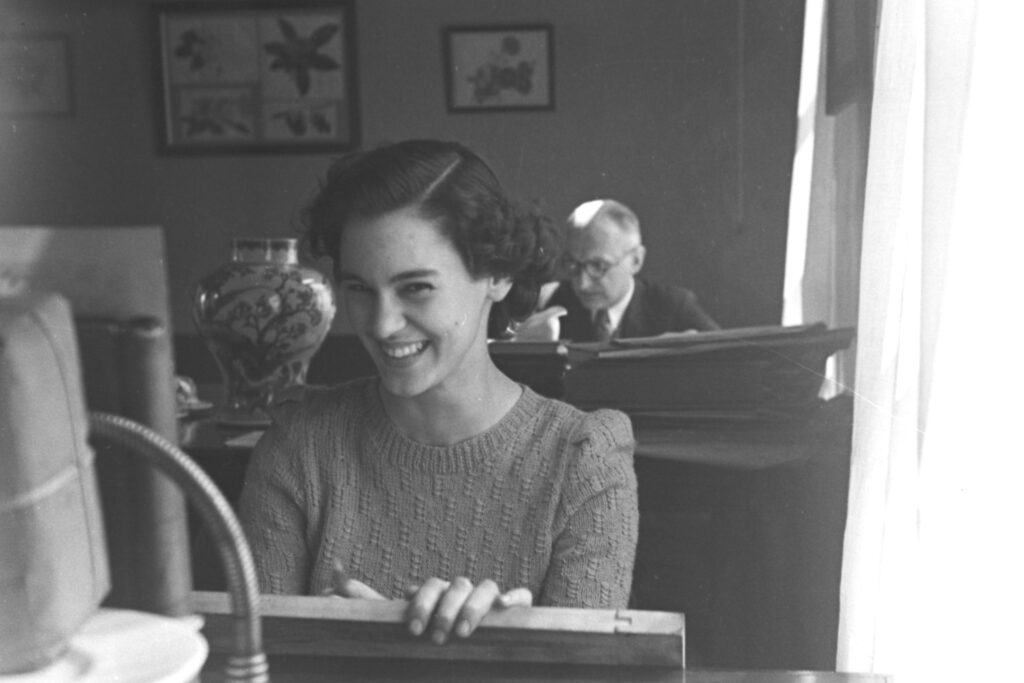
Collectors Guide: The Homemaker Range
As well as the usual cups, saucers, tea / coffee pots and plates, most are surprised to learnt that Homemaker came in a range of shapes. Below is a list of those known to be made by Ridgway. All have the homemaker design unless otherwise stated.
1. Coffee Pot in Metro Shape
2. Tea Pot in Metro Shape
3. Coffee Pot in Cadenza Shape
4. Tea Pot in Cadenza Shape
5. Milk Jug in Cadenza Shape
6. Rimless round plates – 7″, 8″, 9″ and 10″
7. Oval platters large, small and very small
8. Sandwich plates – three known styles, all roughly rectangular; Metro shape with rounded ends, a variant of Metro with lug-type handles, traditional shape embossed with fancy border
9. Round Oatmeal bowl
10. Flat Oatmeal bowl
11. Cereal bowl
12. Sweet dish
13. Fruit bowl
14. Pickle dish
15. Sweet dish
16. Soup plate
17. Cream soup bowl – plus stand, similar to breakfast saucer
18. Cups and saucers – three sizes; mocha, tea, breakfast
19. Milk jug (black glaze)
20. Sugar bowl (black glaze)
21. Gravy boat (black glaze)
22. Tureen (black glazed base)
23. Egg cups
24. Cruet (black glaze)
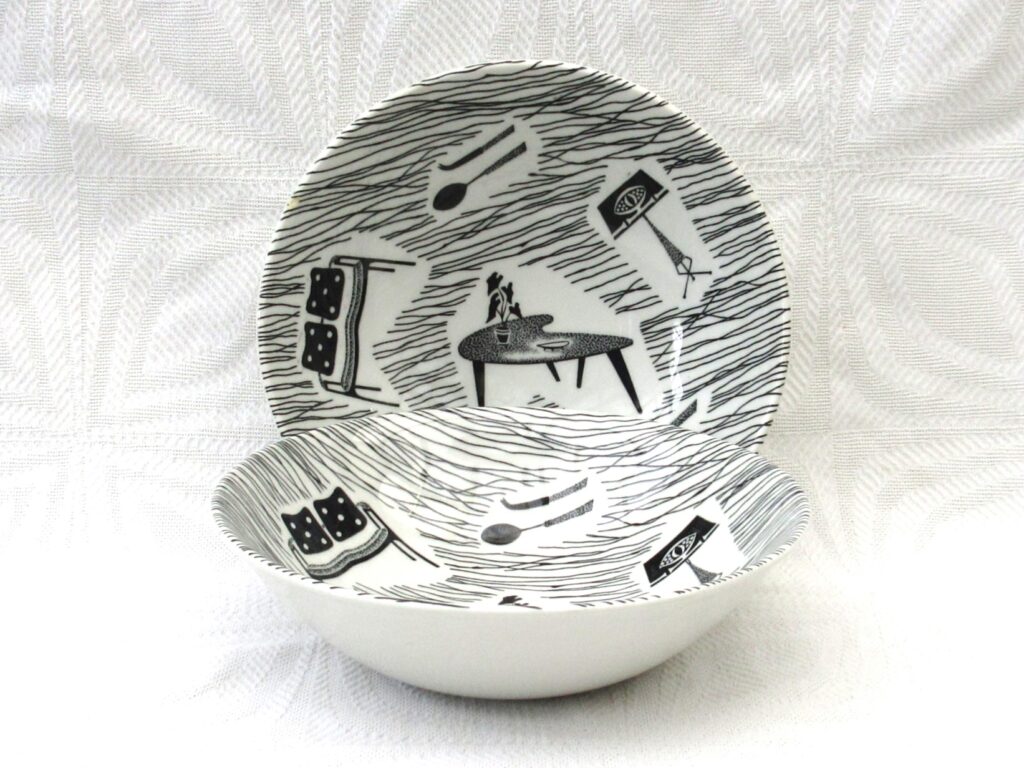
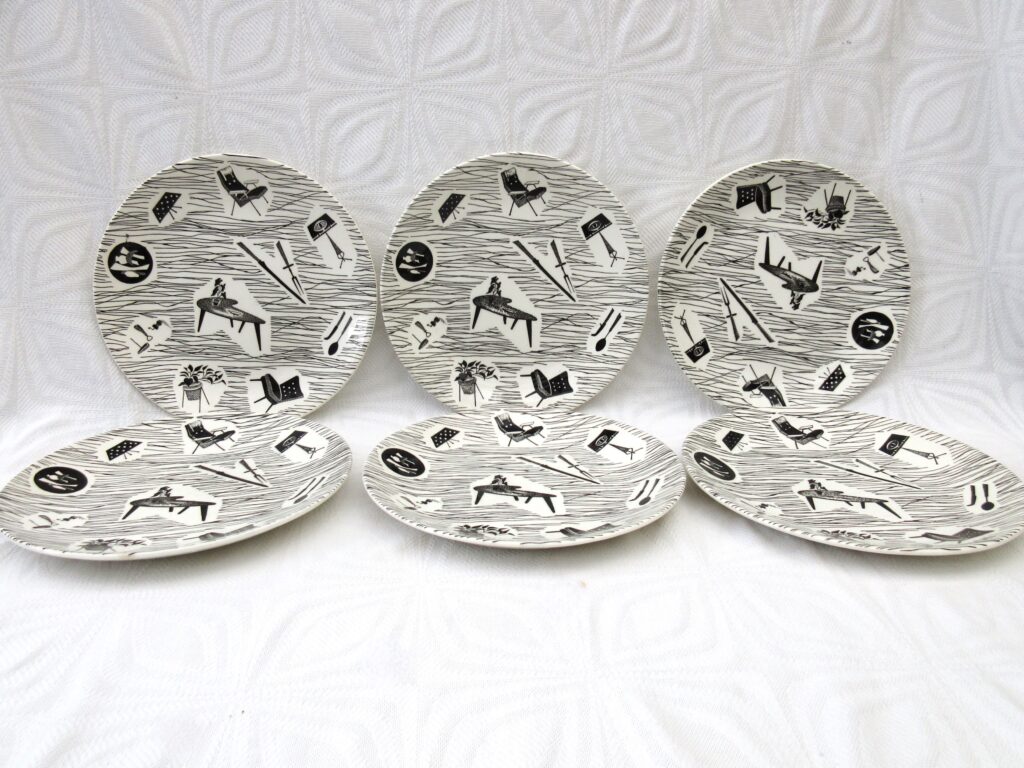

This blog post is written by Rachel Toy, owner of Rachel’s Vintage & Retro. I am a 20th Century Vintage Blogger and Dealer writing about the vintage lifestyle, collecting, nostalgia and selling vintage. I also sell carefully curated 20th century antiques and collectables from my online vintage shop. I am happy to work with related brands on collaborations and also accept guest blogs. Find out how to work with me.

